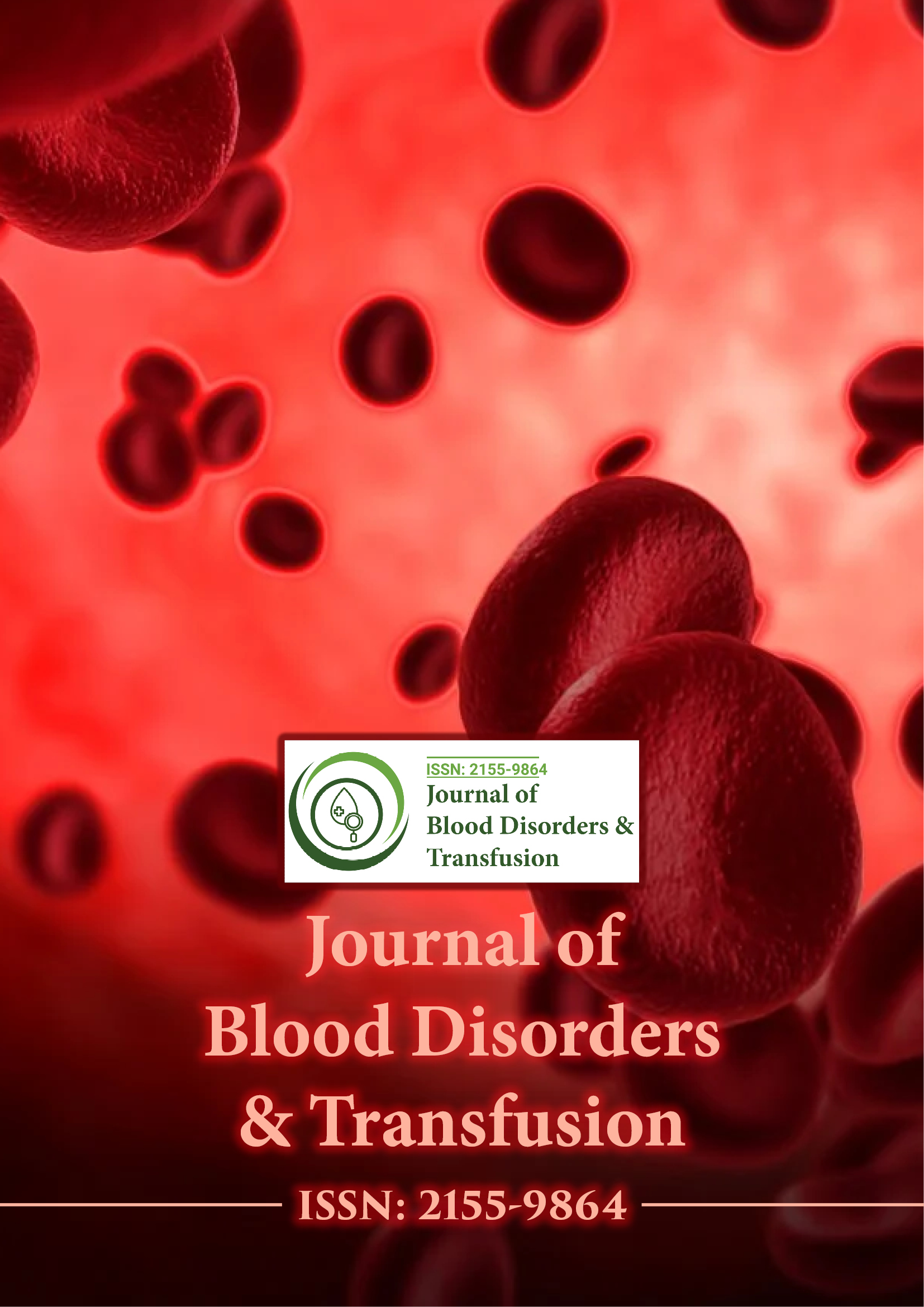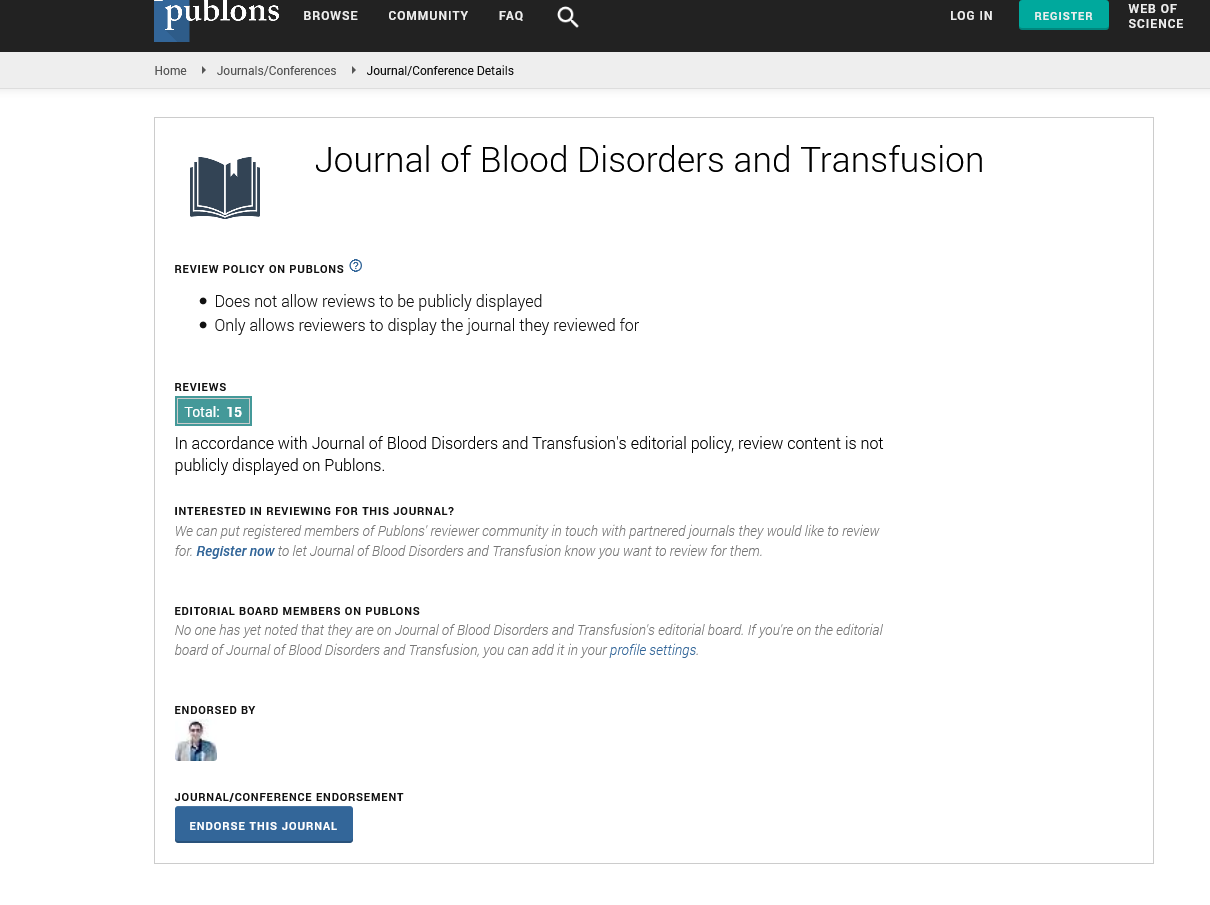Indexed In
- Open J Gate
- Genamics JournalSeek
- JournalTOCs
- Ulrich's Periodicals Directory
- RefSeek
- Hamdard University
- EBSCO A-Z
- OCLC- WorldCat
- Proquest Summons
- Publons
- Geneva Foundation for Medical Education and Research
- Euro Pub
- Google Scholar
Useful Links
Share This Page
Journal Flyer

Open Access Journals
- Agri and Aquaculture
- Biochemistry
- Bioinformatics & Systems Biology
- Business & Management
- Chemistry
- Clinical Sciences
- Engineering
- Food & Nutrition
- General Science
- Genetics & Molecular Biology
- Immunology & Microbiology
- Medical Sciences
- Neuroscience & Psychology
- Nursing & Health Care
- Pharmaceutical Sciences
Perspective - (2025) Volume 0, Issue 0
Impact of Anticoagulant Therapy on Laboratory Monitoring and Patient Outcomes
Thierry Frei*Received: 26-May-2025, Manuscript No. JBDT-25-29783; Editor assigned: 28-May-2025, Pre QC No. JBDT-25-29783 (PQ); Reviewed: 11-Jun-2025, QC No. JBDT-25-29783; Revised: 18-Jun-2025, Manuscript No. JBDT-25-29783 (R); Published: 25-Jun-2025, DOI: 10.4172/2155-9864.25.S14.067
Description
Anticoagulant therapy is widely used for the prevention and treatment of thromboembolic disorders. Its administration affects hemostasis and requires careful monitoring to balance the risk of thrombosis and bleeding. Laboratory assays provide critical information for dose adjustment, therapeutic efficacy and safety assessment. This article reviews the effects of different anticoagulant agents on laboratory parameters, challenges in monitoring and the influence on patient outcomes. Evidence from clinical studies, laboratory evaluations and recent therapeutic innovations are examined.
Anticoagulant therapy is essential in managing conditions such as atrial fibrillation, venous thromboembolism and prosthetic heart valves. Traditional agents, including warfarin and unfractionated heparin, require routine laboratory monitoring to ensure therapeutic effectiveness and avoid adverse events. Novel Oral Anticoagulants (NOACs) have simplified management by reducing monitoring requirements, but laboratory assessment remains important in certain clinical situations. Understanding how anticoagulants affect laboratory assays and clinical outcomes is key to optimizing therapy and reducing complications.
Impact on patient outcomes
Effective anticoagulation reduces the incidence of thromboembolic events but increases bleeding risk if therapy is excessive. Maintaining anticoagulant levels within the therapeutic range improves outcomes, prevents hospital readmissions and reduces mortality. Laboratory-guided dosing, particularly for warfarin and unfractionated heparin, has been associated with better clinical control. NOACs simplify management and show comparable efficacy with reduced monitoring, although renal function and drug interactions can affect outcomes. Early detection of supratherapeutic or subtherapeutic levels is critical for patient safety and minimizing complications.
Special populations
Certain patient populations require additional consideration during anticoagulant therapy. Elderly patients, those with renal or hepatic impairment and individuals undergoing major surgery are at higher risk for bleeding or thrombosis. Laboratory monitoring in these groups allows adjustment of therapy based on pharmacokinetics and individual risk factors. Pregnant patients, pediatric populations and patients with obesity may also exhibit altered drug metabolism, necessitating targeted laboratory assessment to maintain optimal anticoagulant effect and prevent adverse events.
Challenges in monitoring
Laboratory monitoring of anticoagulant therapy presents challenges, including variability between assays, differences in reagent sensitivity and timing of sample collection. Warfarin management is influenced by dietary vitamin K intake, drug interactions and genetic polymorphisms. Heparin therapy requires careful monitoring to prevent heparin-induced thrombocytopenia and ensure appropriate dosing. NOACs, although convenient, may lack standardized assays in some clinical laboratories, complicating assessment in critical scenarios. Addressing these challenges is important to optimize therapy and minimize risks.
Emerging laboratory approaches
Recent advances in laboratory testing provide more precise evaluation of anticoagulant activity. Point-of-care devices allow rapid INR measurement for warfarin management. Calibrated anti-Xa assays improve accuracy for heparin and low molecular weight heparin. Mass spectrometry and chromogenic assays are emerging tools for measuring NOAC concentrations in complex clinical situations. Integration of these techniques into clinical practice enhances patient safety, particularly in perioperative settings or in the presence of comorbidities affecting drug metabolism.
Clinical recommendations
Optimizing anticoagulant therapy requires a combination of laboratory monitoring, clinical assessment and patient education. Frequent INR monitoring for warfarin, periodic anti-Xa evaluation for heparin and awareness of renal and hepatic function for NOACs are essential components of management. Dose adjustments based on laboratory results improve safety and efficacy. Patient adherence, drug interactions and concurrent medical conditions should be considered in therapeutic decisions. Multidisciplinary approaches, including collaboration between physicians, pharmacists and laboratory personnel, support effective anticoagulant management.
Anticoagulant therapy has a significant impact on laboratory parameters and patient outcomes. Monitoring ensures that therapy remains within therapeutic ranges, balancing the prevention of thromboembolism against the risk of bleeding. Understanding the specific effects of different anticoagulant classes on laboratory assays aids in accurate interpretation and clinical decision-making. Advances in laboratory techniques and point-of-care testing enhance monitoring precision and support patient safety. Continuous evaluation of therapy, coupled with individualized assessment, improves clinical outcomes and reduces complications associated with anticoagulant use.
Citation: Frei T (2025). Impact of Anticoagulant Therapy on Laboratory Monitoring and Patient Outcomes. J Blood Disord Transfus. S14:067.
Copyright: © 2025 Frei T. This is an open-access article distributed under the terms of the Creative Commons Attribution License, which permits unrestricted use, distribution, and reproduction in any medium, provided the original author and source are credited.

